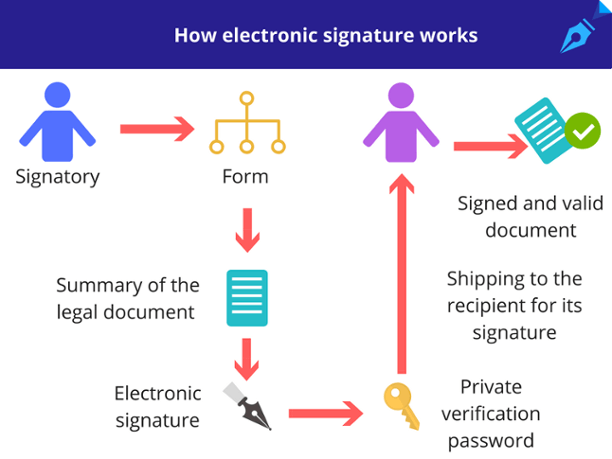Did you know that time-stamping makes more secure your electronic signature?
Probably you’ve had to sign a legal document on several occasions. From the contract of opening a bank account until the signing of a mortgage loan, signing documents is a constant in our day to day paperwork. Then you know how tedious this procedure is.

Nevertheless, thanks to the emergence of new technologies and the widespread use of Internet, there is an alternative: the electronic signature. Thanks to it you can save the disadvantages of having to physically sign a document. Furthermore, you will do it without losing its benefits, even gaining more safety in your signatures.
Would you like to know how? Stay with us and we will tell you all about it.
What’s an electronic signature?
An electronic signature is the electronic equivalent of a handwritten signature, through which a person accepts electronic contents. This takes place by means of a valid electronic medium, such as:
- Signing with a pen after paying in a tent with card.
- Check a box using a mouse or touch screen.
- Using a username and password.
In short, it is a set of electronic data associated with an electronic document that performs the following functions:
- Identifies unequivocally who the signatory is
- Ensures the integrity of the signed document and that it has not been modified.
- Gives even more validity to the firm, as the data that the signer uses are unique and exclusive.
Its functioning is very simple. The most innovative companies in the legal sector already include it. We can see an example of how electronic signatures works in Legalbono platform in the following image:

Advantages of using the electronic signature
Now you know what an electronic signature is we will explain you its advantages:
- You can sign your documents anytime, anywhere, no matter the distance or time difference.
- Saves you time and money by avoiding you unnecessary displacements associated with physically signing a document.
- Its authenticity is verified by sending a unique private password.
- In contrast to the handwritten signature, ensures that the document will be not amended or that extra content will not be added
The time-stamping or how to make your electronic signature a secure one
As you can see, the electronic signature presents important benefits against the traditional handwritten signature. However, their use is even more beneficial when it comes backed by a time-stamping.
Time-stamping is a method that proves the existence of a set of data at any given time, as well as that none of this data has been modified since then. Provides an added value to your signature, including all the information about time of creation in an encrypted code stored safely.
This information is key to provide evidence with legal validity or to ensure the integrity of the signed document. For this time-stamping to be completely reliable, it must be provided with an associated certificate issued by a trusted third party.
In LegalBono, all your legal documents require advanced electronic signature. This electronic signature is certified and it has been designed to meet all the key requirements of the Directive EC/1999/93 and 59/2003 Act on electronic signatures, including the time-stamping.
Therefore, when you sign a document using this faster and more effective signature method, you have the certainty that the process is 100% safe and valid.
Would you like to try it?

